This week we're seeking the science of laughter and music. We're speaking to comedian Robin Ince about how geneticists and astronomers can inspire stand up comedy, listening to the music of the world's first online science music festival, and genetically profiling comedienne Kathryn Ryan. We also get the giggles to find out what happens in your brain to make laughter so addictive. Plus, we'll follow the footprints of human evolution, find out how Jupiter and Saturn acted as celestial bulldozers, and discover how a cheeky octopus left an aquarium knee deep in water!
In this episode
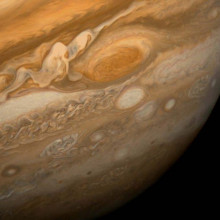
Missing Asteroid Mystery Mitigated
There are asteroids missing from the belt between Mars and Jupiter, and now researchers think they were shoved out of place by two of our solar system's gas giants - Jupiter and Saturn, as they assumed their current orbit some 4 billion years ago.
So the missing pieces of our asteroid belt can help us to fill in some of the missing pieces of the history of our solar system!
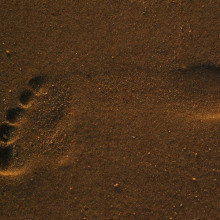
Walk like a man
As the Bee Gees sang in their seventies hit Staying Alive, there's a lot you can tell from the way someone uses their walk. And now it seems that our ancestors may have been walking like us for at least 1.5 million years.
 That's according to a study published this week in the journal Science by a team led by Matthew Bennett from Bournemouth University in the UK, who have uncovered two sets of fossilised footsteps thought to have been left behind by Homo erectus strolling through deposits of volcanic ash near Lake Turkana in northern Kenya between 1.53 and 1.51 million years ago.
That's according to a study published this week in the journal Science by a team led by Matthew Bennett from Bournemouth University in the UK, who have uncovered two sets of fossilised footsteps thought to have been left behind by Homo erectus strolling through deposits of volcanic ash near Lake Turkana in northern Kenya between 1.53 and 1.51 million years ago.
Walking on two feet is a key human adaptation that first evolved around 6 millions year ago, but until now there's not been enough evidence for when the modern human gait first evolved. Apparently there aren't many feet in the fossil record, possibly because predators and scavengers like to eat them.
The oldest known footprints from the human lineage are from Australopithecus afarensis 3.7 million years ago, but those footprints from Tanzania revealed that are ancestors at that stage were waking around with a more ape-like gait, with a splayed big toe and a foot generally suited for grasping things rather than walking along the ground.
These newly discovered tracks have a shape much more similar to what you leave behind when you walk along a beach. As we walk, we first put down our heal which makes a deep impression in the sand, then we move our weight to the ball of the foot - again making a deep impression - then we propel ourselves forward on our toes, and most importantly our big toe which lies in line with our feet.
It's incredible to think that just a few individual Homo erectus left their footprints in the mud which then turned to stone to be found a million and a half years later by their descendants and used to help unpick one of the great mysteries of human evolution.
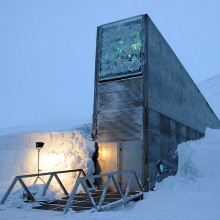
Happy Birthday Seeds!
A global seed bank in Svalbard celebrated its 1st birthday on the 26th of February, but rather than receiving a cake, they received a four tonne shipment of seeds from all over the world, bringing the total number of seeds stored to over 20 million.
 Described as the "custodians of the crown jewels of crop diversity", seed banks like this one are essential not only as an archive of wild and cultivated species, keeping them safe from whatever may happen in the wild, but also as an enormous genetic database that may enable us to grow more food crops or cope with a changing climate.
Described as the "custodians of the crown jewels of crop diversity", seed banks like this one are essential not only as an archive of wild and cultivated species, keeping them safe from whatever may happen in the wild, but also as an enormous genetic database that may enable us to grow more food crops or cope with a changing climate.
There have already been predictions that a changing climate could reduce maize production in Southern Africa by 30 percent over the next 20 years, which shows that we need to maintain as diverse a range of crops as possible in order to adapt our agriculture to the climate. Without these stored seeds and the genetic secrets they contain, we would struggle to maintain even the current level of food production.
Seeds arriving at the vault to celebrate its anniversary include 32 varieties of potatoes as well as oats, wheat, barley, and various wild grasses, and are travelling from Canada, Ireland, Switzerland, the USA, Syria, Mexico and Columbia, though many of the seeds they have amassed are from all over the world.
The Svalbard vault itself is an incredible feat of engineering, consisting of chambers carved 120 meters into a mountain, with a capacity to store 4.5 million types of seeds. It's part of a network of seed banks all over the world, each duplicating the seeds that the others hold as a back-up, so in the event of a global catastrophe, any one of them could act as a "Noah's Ark" for agriculture.
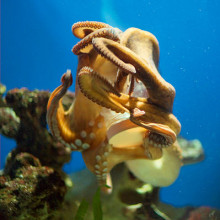
Wannabe octopus fugitive
It wasn't quite the Great Escape, but aquarium keepers at Santa Monica Pier Aquarium in the United States were left knee deep in water this week when a cheeky octopus tried to make a break for freedom.
 The female two-spotted octopus, about 30cm long, swam to the top of her tank and using her dextrous tentacles, unscrewed the water valve on her tank, releasing at least 200 gallons of seawater that gushed out into the aquarium causing havoc. The wily escapologist survived the ordeal but didn't quite manage break out of her tank.
The female two-spotted octopus, about 30cm long, swam to the top of her tank and using her dextrous tentacles, unscrewed the water valve on her tank, releasing at least 200 gallons of seawater that gushed out into the aquarium causing havoc. The wily escapologist survived the ordeal but didn't quite manage break out of her tank.
Octopuses are well known for their curiosity, nimble tentacles and immense strength. Biologists are still not sure just how intelligent octopuses are - and we don't know for sure whether this octopus was deliberately fiddling with the tank tap knowing what would happen - but they certainly seem to some of the brainiest invertebrates there are. They can learn behaviours like opening jars full of food and leap into neighbouring aquarium tanks in the search for food.
Perhaps the most brilliant animal in the world (in Helen's opinion anyway) is the Mimic Octopus that lives in Indonesia and spends its life doing amazing impersonations of lots of other animals like sea snakes, flat fish and lion fish.
Octopuses may even have a sense of humour. There's a story of an octopus that when it was given a slightly off shrimp to eat, stuffed it into a drain while keeping eye contact with the aquarium keeper, as if to say "I'm not eating that!"
Press Release from Santa Monica Pier Aquarium:
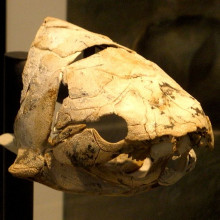
10:21 - First Fish Sex
First Fish Sex
with Nicola Phillips and John Long
Nicky - Geologist John Long and his team have discovered how ancient vertebrates have sex and even how their penis functioned. This research, combined with early finds suggests that vertebrates separated into males and females in primitive fish almost four hundred million years ago. Scientists have known ancient fish had sex since their discovery of a primitive mother fish with a fossilised embryo inside it in the Gogo region  of Western Australia last year. The mother fish, a species called ptyctodon is from a group of extinct fish called placoderms. Since then scientists have pieced together fossil records of another species of placoderms called arthrodires and revealed they too contained embryos. These fossilised embryos are the oldest records of live birth in vertebrates. Because live birth can't occur without sex. Scientists knew that primitive fish were doing the deed but how some of them were doing hit has remained a mystery until now. John Long, from the Museum of Victoria:
of Western Australia last year. The mother fish, a species called ptyctodon is from a group of extinct fish called placoderms. Since then scientists have pieced together fossil records of another species of placoderms called arthrodires and revealed they too contained embryos. These fossilised embryos are the oldest records of live birth in vertebrates. Because live birth can't occur without sex. Scientists knew that primitive fish were doing the deed but how some of them were doing hit has remained a mystery until now. John Long, from the Museum of Victoria:
John - Now looking at more of this amazing fossil fish material from the Gogo fossil sites in Australia we've found that the biggest group of these armoured fish placoderms - the biggest group, the arthrodires - also have embryos inside them and they were also fertilising by males copulating with the females. This is something that we would not have expected. When you look at the group that the mother fish belongs to, the ptyctadons, they actually show sexual dimorphism. The males have claspers and the females don't. Claspers are what we see in sharks and rays today, how they copulate. The arthrodires, on the other hand, their pelvic fins up and till now have been always depicted as very simple structures just like simple fins. It may just go right back and look again, and look hard at these fossils to see if anything had been overlooked. We found it.  It was another fantastic eureka moment when you make a big discovery that for a hundred years has been completely overlooked. We found that these pelvic fins in these arthrodires had an extra articulation and that articulation meant that had a long lobe attached to the fin that was directed behind the fish in a rearward direction. That looks exactly like the claspers in modern sharks. We found out not only that this major group were having internal fertilisation but we found out how they were doing it. We believe that this shows the origin of the beginning of sexual dimorphism in vertebrates.
It was another fantastic eureka moment when you make a big discovery that for a hundred years has been completely overlooked. We found that these pelvic fins in these arthrodires had an extra articulation and that articulation meant that had a long lobe attached to the fin that was directed behind the fish in a rearward direction. That looks exactly like the claspers in modern sharks. We found out not only that this major group were having internal fertilisation but we found out how they were doing it. We believe that this shows the origin of the beginning of sexual dimorphism in vertebrates.
Ben - So structures found on fossilised fish can tell us a great deal about the evolution of sexual dimorphism. That's different characteristics for males and females and the more we understand about these ancient animals the better we understand our own evolutionary history. That was John Long from Museum Victoria.
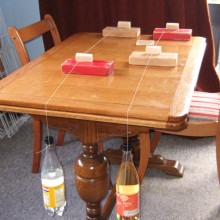
Singing stirings - build a guitar
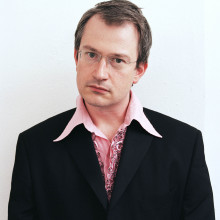
17:23 - When Science meets Comedy
When Science meets Comedy
with Robin Ince
Robin - Bleeding heart liberal was originally going to be a more political show than it is but it started edging more and more into things about Carl Sagan and Voyager and what was put on a golden record that went through space for whatever lucky extra terrestrial would find out about it. There's some poo jokes in it and when there's not poo jokes it's probably me either talking about my favourite geneticists or astronomers. I think at the moment it's a very enthusiastic show. I think that's what I am. I'm halfway between being a self-loathing curmudgeon and an Open University lecturer who's actually eaten some mushrooms he found under the bark of a tree.
Ben - It sounds like a risk actually to talk about, as you said, your favourite geneticist. I'd imagine a lot of people don't even have a favourite geneticist.
Robin - I think part of the key to it is to, right from the start, lay out the fact that you are not smarter than the audience. You can sometimes look supercilious or superior whereas I am playing it very much from the angle that I'm not from a scientific background, I've got increasingly into science. I try and make it as silly as possible. Part of the humour is perhaps the ridiculous man jumping up and down doing nursery rhymes that were supposedly invented by Gregor Mendel.
Ben - I take it from that Mendel's your favourite geneticist?
Robin - Do you know what, they're so troublesome! You know the way that James Watson just suddenly fell out of the chart last year, whether it was justified or not? I just find I'm always fascinated by intellectual monks. Whether they're inventing tonic wines, whether they're noting moments where the moon has been struck by a small asteroid or whether they're counting wrinkles in smooth peas.
 Ben - Well that's the Mendel story. You said you mentioned your favourite astronomer. They're in the news a lot at the moment because it's the International Year of Astronomy. Who would be your pick for that?
Ben - Well that's the Mendel story. You said you mentioned your favourite astronomer. They're in the news a lot at the moment because it's the International Year of Astronomy. Who would be your pick for that?
Robin - In truth what I often do is I have a pretend top 3, of which I never reveal two of them, which allows me to constantly change my list without anyone realising, year by year. Ultimately it is probably Carl Sagan, just because Carl Sagan's my favourite scientist. I know that many people would say that his level of scientific achievement in terms of discovering a new theory or whatever it may be is not great but his zeal, his passion, the fact that he brought so many people onto science, reading his books which combine magnificent poetry with hard facts. I find I'm quite obsessed by him. Eratosthenes, I've been trying for five years to write a routine about Eratosthenes, the man who first got an approximate idea of what the circumference of the Earth was through shadows, sticks and wells. I still haven't found it. Maybe when I come to Cambridge or Norwich I shall attempt another making Eratosthenes funny routine.
Ben - Science inspires you, how are your audiences responding?
Robin - Every now and again there are some people who are a little bit confused. I was doing a gig in Bromsgrove. Because I was just sitting, waiting outside the stage door I just heard a couple go past go: "well to be quite honest I didn't quite understand quite a lot of that." It's a starting point hopefully. What I've found that is lovely is finding that people have gone out and bought books by Richard Feynman and books by  Carl Sagan and other science books off the back of seeing me tour and play music festivals. I think that people are much smarter than we imagine. For instance, when I play Reading and Leeds music festivals they said afterwards, if I was you I might dumb down for Reading. I found at Reading you can play to 3000 reasonably drunk teenagers and they will get what you're talking about. If you approach something passionately and hopefully there are some jokes in there as well they don't immediately switch off. It's not just about drinking and shagging and the things which TV seems to believe is the only thing that an audience can handle.
Carl Sagan and other science books off the back of seeing me tour and play music festivals. I think that people are much smarter than we imagine. For instance, when I play Reading and Leeds music festivals they said afterwards, if I was you I might dumb down for Reading. I found at Reading you can play to 3000 reasonably drunk teenagers and they will get what you're talking about. If you approach something passionately and hopefully there are some jokes in there as well they don't immediately switch off. It's not just about drinking and shagging and the things which TV seems to believe is the only thing that an audience can handle.
Ben - This year is also an anniversary of two hundred years since Charles Darwin was born and 150 years since the Origin of the Species was published. How does Darwin fit in your show?
Robin - I think the first time I became truly fascinated was reading an essay by Jacob Brunowski where he talks about, if you drove past down on the 3rd day of the 3rd year you'd have seen a young man playing a bassoon to a flower. It was Darwin making his son playing a bassoon to see how it affected flowers. I thought this is an interesting man. Obviously I also am a reasonably big fan of the theory of evolution. It seems like a pretty good theory to come up with. The show does end up on about 15-20 minutes about Charles Darwin, about having 20 years locked in your head - having this amazing theory - and then I can't resist a little bit about the woolly-headed nature of creationism.
 Ben - Do you think there is a movement towards more science-inspired comedy. Several of your peers: Ricky Gervais is obviously pro-science - not a lot of it makes it into his stand-up routines.
Ben - Do you think there is a movement towards more science-inspired comedy. Several of your peers: Ricky Gervais is obviously pro-science - not a lot of it makes it into his stand-up routines.
Robin - No I don't think a lot of it will make it into his new show which is titled 'Science.' There is a huge and accidental rational movement basically. I think after we put together the show 'Nine Lessons and Carols for Godless People' where we, on the science side you have Simon Singh and Ben Goldacre and Richard Dawkins and various musicians - people like Jarvis Cocker and Darren Hayman. And then comedians and all of them were doing something on the rational world. You have people like Dara O'Brian, Chris Allison, Stewart Lee and Josie Long. All of them are approaching things from a rational perspective, especially Dara who has a physics background. He's very excited about talking about science. I think the reason is perhaps because TV isn't really pandering very much to intellectual programming. I hate - that's a terrible thing to say but knowledge, learning and anything like that. There has been an accidental rational/scientific movement to start in comedy.

24:35 - Addicted to Laughter
Addicted to Laughter
with Professor Sophie Scott, Institute of Cognitive Neuroscience, UCL
Helen - Professor Sophie Scott from University College London has looked into finding out what's going on in our brains when we see other people laugh. Hello Sophie. Thanks for joining us on the show today. What's going on inside our brains when we hear other people laughing?
 Sophie - What's going on when you hear any kind of emotional sounds, when you hear somebody screaming as well as going 'ugh' as well as laughing what we find is the part of your brain which you would use to process heard sounds is activated. Also we find the parts of the brain you would activate to yourself produce facial movements and noises is also activated. It's part of what you're doing when you hear people expressing emotions in their voices. It starts to join in a little bit with the type of emotion their expressing. Interestingly, we're finding it's much greater for laughter than it is for a highly contagious emotion like disgust. Nonetheless the laughter effect is much bigger. It seems that when you hear somebody laughing your brain is really strongly responding to an attempt to get you to start smiling.
Sophie - What's going on when you hear any kind of emotional sounds, when you hear somebody screaming as well as going 'ugh' as well as laughing what we find is the part of your brain which you would use to process heard sounds is activated. Also we find the parts of the brain you would activate to yourself produce facial movements and noises is also activated. It's part of what you're doing when you hear people expressing emotions in their voices. It starts to join in a little bit with the type of emotion their expressing. Interestingly, we're finding it's much greater for laughter than it is for a highly contagious emotion like disgust. Nonetheless the laughter effect is much bigger. It seems that when you hear somebody laughing your brain is really strongly responding to an attempt to get you to start smiling.
Helen - So basically your brain is getting ready to smile, even if you're not at that point of smiling. Do we know if that's what's going on really?
Sophie - That's what going on. There are people who aren't smiling, they're not laughing but they're just listening to the sounds. They're told not to move or to do anything. Nonetheless even though they're being told not to engage with these sounds at all their brain is gearing up much more when they hear the laughter. We're interpreting that as the precursor of people actually starting to smile.
Helen - How are we finding this out? How are you looking inside people's brains and finding out what's going on when they're hearing different sounds or other people?
Sophie - We're using a technique called functional magnetic resonance imaging which is a way of taking photographs of activity inside people's brains when they're, for example, listening to different sounds or they're doing different things.
Helen - Why do you think this might be? What are the ideas behind it? Why should we want to mimic laughter?
 Sophie - It seems to be that, obviously different emotions have different functions. Laughter has a very important function as a group activity. People like to group to laugh with other people. We laugh more when we're with other people. In fact, if you look at groups of friends talking to each other they'll try and make each other laugh all the time. It's actually something we do as a strong social bond. You'll find this in other primates. We're not the only species of monkey that laugh. There's groups of chimpanzees that do laugh. They do this in the same way to reinforce bonding.
Sophie - It seems to be that, obviously different emotions have different functions. Laughter has a very important function as a group activity. People like to group to laugh with other people. We laugh more when we're with other people. In fact, if you look at groups of friends talking to each other they'll try and make each other laugh all the time. It's actually something we do as a strong social bond. You'll find this in other primates. We're not the only species of monkey that laugh. There's groups of chimpanzees that do laugh. They do this in the same way to reinforce bonding.
Helen - I wonder if we would start smiling if we hear chimpanzees laughing.
Sophie - You would do. It sounds very much like a human laugh. You can hear that it's not human, it's different. It's definitely a laugh.
Helen - Babies make laughing sounds too don't they. Do we know that's a similar reason why gurgling, happy sounds come out of us when we're still very tiny?
Sophie - I think that's a very good point. It does seem to be one of the first kinds of behaviours that really emerges. Children often cry from the moment they're born but babies start to smile and laugh around six weeks. That seems to be a really important function for establishing close bonds with their care givers. Parents are always absolutely thrilled when their baby starts smiling and laughing back at them. Then they'll really go miles to try to get the baby to laugh. It's got this really strong positive bonding quality.
Helen - Presumably we do feel good when we laugh. Is that part of it as well? Are there hormones that are making us feel happy when we laugh?
 Sophie - Absolutely. And I'm supremely unqualified to talk about them but I'm talking about the activity side of the brain. I'm not really addressing the chemical changes but undoubtedly there's going to be all these feel-good hormones. It feels great if you sat and talked to good friends and have a good laugh. It's a lovely feeling. That's going to be one of the things that's enforcing the quality of the interaction.
Sophie - Absolutely. And I'm supremely unqualified to talk about them but I'm talking about the activity side of the brain. I'm not really addressing the chemical changes but undoubtedly there's going to be all these feel-good hormones. It feels great if you sat and talked to good friends and have a good laugh. It's a lovely feeling. That's going to be one of the things that's enforcing the quality of the interaction.
Helen - We think that maybe we've been laughing longer than we've been talking. Is that right?
Sophie - There are some people who've argued that because you find laughter in other primate groups and some people have argued in other mammals. Laughter would be one reason for us to get together and have social bonds form between us even before we talked to each other. It's something we could do as a group of people before we could even necessarily have words.
Helen - I like the idea of wordless Stone Age jokes, wonderful! There are different types of laughter, aren't there? We think about laughter just being something to do with a joke or something that's funny. We laugh when we're nervous or perhaps as cruel laughter as well. Do you think the brain's going to respond differently to different types of laughter?
Sophie - I think this is almost certainly going to be the case. I'm just looking at one type of laughter. We were taking quite genuine sounding laughs that didn't have any particular quality to them. There weren't any evil laughs or nervous laughs. When you consider that people actually laugh in lots of different ways. If you ask what makes people laugh they will tell you different things. In Germany people will give you a different answer than people would here. That's associated with different qualities of laugh that people in different cultures are better attuned at hearing. I think there's undoubtedly a whole story within this of different kinds of laughter and different ways that we use it.
Helen - Is it all about the sound of laughter or if we look at someone else or see someone else laughing. Is that going to give us a similar response in our brains?
Sophie - I think so. You must have had the experience of sitting in a meeting and you can see in your peripheral vision that one of your colleagues has started giggling and they're not making any noise yet but they're shaking in the way they're laughing. It starts to have that effect on you. I think it's something that's not bound to be expressed in the auditory modality.
Helen - Sometimes people make nasty sounds: screaming and retching. You said there wasn't such a strong response. We're not pulling a face as much or preparing ourselves to pull a face when that happens.
Sophie - There was a degree of an effect there but it was a much less strong effect than the negative effects we looked at. It did seem that there's a little bit of understanding emotions made by other people seems to be that you engage motor areas - these areas you'd use to make actions yourself. They're much less strong than they are for these positive emotions like laughter. It can't be something to do with the contagion of emotion itself because we know that disgust is really contagious. If you're with somebody who looks at the bowl of food and goes 'ergh' you're going to feel a little bit sick. You'll probably not want to eat that food yourself. It's very contagious but it doesn't seem that when they go 'blergh' you have to start going 'blergh' as well.
Helen - Just as well to hear them! Where are you going to take this next? Are you going to start planning to look at more detail at what is going on inside our brains when we're preparing to laugh and smile?
Sophie - There's all sorts of things we're trying to do with this. One of my colleagues who's been working on this since I started has been off looking at laughter in other cultures. She's been off working with people living in very un-westernised societies in the Namibian Desert. Lo and behold they actually laugh in the same way. It is interesting to look at the really strong commonalities across groups. It's also interesting to start looking at these things in terms of understanding normal and abnormal brain function. Can we find some of these patterns of these responses to very positive emotional noises; are they reduced in any particular clinical groups? People who really aren't finding life very funny, are they showing depresses responses?
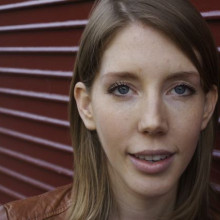
32:14 - Profile of a Comedienne
Profile of a Comedienne
with Katherine Ryan, Steve Jones
Meera - At the end of January Channel 4 and the Wellcome Trust launched an 8-part online miniseries called 'Routes' which saw award-winning comedienne, Katherine Ryan, send a sample of her saliva to a lab in a bid to help her understand what's hidden in her genes.
 Katherine - For the routes project I had to spit in a tube and send away my DNA to have a full genome profile done.
Katherine - For the routes project I had to spit in a tube and send away my DNA to have a full genome profile done.
Meera - Before you did it how did you feel about having your DNA sequenced? Were you nervous?
Katherine - I was always open to the idea of - I'm not afraid of information. I think that it can only help you. I really was interested to know the result.
Meera - You already knew a little bit about your genetics before you did this, didn't you?
Katherine - Yeah, I've had some bad news already, I guess. I had a melanoma two years ago that was a little bit advanced. I had to have a few surgeries to get rid of that. That's a particularly aggressive form of skin cancer and there are different genes they can test, different markers that might say you'd have a higher probability of getting cancer than someone else. It was just something that I'd love to do to see what else is in there and I'm having a baby this year. I really wanted to see what I might be a carrier of.
Meera - What did you find out?
Katherine - Funny things. I found out that I'm not resistant to malaria or the norovirus. I'm not resistant to AIDS, which is weird. I didn't know anybody was resistant to AIDS! I learned that Lupus [Systemic Lupus Erythematosus] is closely related to coeliac disease, which runs in my family. They're both autoimmune disorders. I have a prostate cancer gene, but I don't have a prostate gland so I'm okay! I don't have schizophrenia or Parkinson's or cystic fibrosis carrier traits. Some good news and bad news all mixed in there. It's a huge profile that you get back. Some of the information was that my eyes are blue, I knew that. I'm very white. I think that some of my ancestry comes from Ireland and nowhere else. It was all very interesting. I add research to it all the time. They compare your results to people with the same background and there's always something new to learn.
Meera - That was comedienne Katherine Ryan discussing her experience of having her genome profiled. How is this profile actually done and how relevant is the information that it provides us with? I met up with Steve Jones, Head of Genetics at University College London to find out, starting with why spit is such a good sample to use.
Steve - To start with it's not really spit. Spit is just an organic liquid. More important is what cells float in it. Cells are what your body is made out of. There are trillions and trillions of cells. That will contain enough cells for them to take off to the lab, take DNA out of it and do this magical sequencing.
Meera - Once a sample has been sent off what actually happens to get a sequence of someone's DNA?
Steve - It's quite a complicated business. There's a whole variety of methods of actually doing it. One way is to basically take a set of molecular scissors which snip, at a particular point, 3 letter sequences. You snip all the way along the DNA into tiny little fragments often overlapping with each other. You look for the overlaps and then rebuild up the whole sequence. That's how you do a DNA sequence. I think what this young lady had done probably wasn't quite a sequence, it was looking at individual points in the DNA to see whether they varied compared to the population as a whole.
Meera - What does looking at particular points or markers in someone's DNA, what can that tell you about someone?
 Steve - In some ways looking at a short length of DNA is a bit like looking for a surname. If you look for a surname in the European system it passes from fathers to sons, to grandsons and so on. Any short length of DNA, as long as it's short enough will travel down the generations as a block of letters. By looking at that block of letters you're really sorting out your identity in relation to the other people around you. They look at predetermined points, spots in the DNA which they know varies from person to person, and which quite often we know predisposes to certain inherited conditions, perhaps in association with the environment.
Steve - In some ways looking at a short length of DNA is a bit like looking for a surname. If you look for a surname in the European system it passes from fathers to sons, to grandsons and so on. Any short length of DNA, as long as it's short enough will travel down the generations as a block of letters. By looking at that block of letters you're really sorting out your identity in relation to the other people around you. They look at predetermined points, spots in the DNA which they know varies from person to person, and which quite often we know predisposes to certain inherited conditions, perhaps in association with the environment.
Meera - once someone has their genome sequenced in this way what is the result of this sequencing that they see?
Steve - What you can produce is what's called the haplotype which is just a statement of what your identity at particular points of the DNA is. If she's interested in health there are particular genes which predispose to certain diseases. Some are well-known diseases like cystic fibrosis which she'd probably know already if she had but it could possibly tell you that maybe, for example, in order to get lung cancer you need to smoke. You need to have one rather common genetic variant. There was once a hope that you could screen lots and lots of people and tell them I'm afraid you've got the gene that if you smoke you will almost certainly get lung cancer. The hope was it would stop people smoking. It doesn't.
Meera - Some people worry about genome sequencing because they are concerned about finding out what diseases or disorders they might get. Surely it's not just your genetics. Environment also plays an important role, doesn't it?
Steve - There are occasional rare genetic diseases, things like cystic fibrosis that if you've got them really obviously it's the gene that makes a big difference. The environment doesn't make all that much difference. There are many more like heart disease. If you have particular genes it is particularly important for you to avoid a fatty diet, not to get overweight, not to smoke and that kind of stuff. I don't deny this is true. This is certainly true. That's true for everybody.
Meera - Geneticist Steve Jones explaining how Katherine's sample would have been analysed to provide her with her profile of susceptibility and resistance to certain genetic disorders. To find out more about Katherine's experience or play the range of interactive games that Channel 4 have developed to explain the world of genetics visit the roots website at
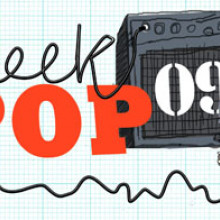
38:41 - Geek Pop - Science and Music Collide Online
Geek Pop - Science and Music Collide Online
with Vicky West, Geek Pop
Ben - Geekpop is an online music festival dedicated to music about, or inspired by science. To give you an idea of the sort of music we're talking about here's a sample of the song 'nanobot' by 'A Latin Punk Circle.'
ALatinPunkCircle - Nanobot
Ben - Hi Vicky, thanks for joining us.
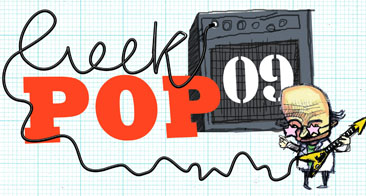 Vicky - Thank you for having me.
Vicky - Thank you for having me.
Ben - Geekpop is a fantastic idea. How did you come up with this?
Vicky - It was a bit of a pet project really. Me and a couple of fellow geeks were doing a post grad course in science communication which is very serious and all about expelling the myths of scientists being these labcoat-wearing, bespectacled people. We just thought, it's not all about this. Sometimes there are geeks who are quite happy to be geeks and have a bit of fun with it as well. We threw it open on our Facebook group just to come up with some science-related pop music. We had the usual suspects: Atomic Kitten - fairly tenuous links. It just kind of snowballed from there. We started getting contacts from lots of bands who were either working in science or were writing about scientific matters. They were asking to get involved and whether there'd be a platform to share their music. That's how the GeekPop festival came about, really.
Ben - As you said, it's an online music festival. When I think of music festivals I think of very large, muddy fields. I think of knackered tents, big stages, loud bands. How does this work online?
Vicky - It's basically, if you imagine your favourite festival, in the comfort of your own home or car or wherever you listen to your mp3 player. We've got 4 different tents. There's the tetrahedron, (other shapes are available), the reproductive stage, the tesla tent and the experimental stage as well: much like many of the big commercial festivals. There are lots of different styles of music at each tent. You obviously don't have to pay. It's free-of-charge. We ask people to get online - geekpop.co.uk - and download it to your mp3 player. Then you can have this virtual festival experience whenever or wherever you like.
 Ben - So you're not tied down to particular times of live events that you're streaming across the internet? You can actually download these and listen and stop and start wherever need be, go back and listen to a song again. This is actually a lot better than going to a real festival where you'll get caked in mud and all the really good bits you'll have to rely on your (somewhat shoddy) memory for.
Ben - So you're not tied down to particular times of live events that you're streaming across the internet? You can actually download these and listen and stop and start wherever need be, go back and listen to a song again. This is actually a lot better than going to a real festival where you'll get caked in mud and all the really good bits you'll have to rely on your (somewhat shoddy) memory for.
Vicky - Indeed. Memories aren't always the most reliable at festivals, are they? I don't know what your experiences are like, Ben. It's pretty much that. Although it feels like a live experience you can revisit it any time you like. If there's a particular band you're into. We also have some exclusive green room areas as well. If you want to find out more about a band or the science behind a song we have lots of interview about those bands. There's some online content as well. You can literally pick it up and put it down as you wish. It's an annual event. Last year's turned into a much bigger event than we ever anticipated. We've got big hopes for this year's event as well which kicks off on the 6th March, which happens to be our national Science and Engineering week as well. Purely coincidental. It'll be up there for some time so you can pitch in at any time you like.
Ben - That's good to hear. The last clip of the song we heard was clearly and very obviously a song written about a scientific topic. I've been sent a sample by a band called The Standard which seems to be rather less directly scientific but more inspired by something. Let's have a play at that.
The Standards - 11 Dimensions
Ben - That is a tiny bit tenuous. Have you had to turn anyone away? Has someone turned up and said - 'I've got this song, it's all about science I'd like you to publicise it for me on the net,' and you've had to say, 'well, I'm sorry but that's just misleading science?'
 Vicky - Absolutely. We do have elements of quality control. It's not a free-for-all. Everyone's had to audition in a virtual festival environment. The bands that have made it through - I hope that anyone that downloads it will agree - they're all really good quality bands. Very diverse and like you say lots of them are directly science related and lots of them quite tenuous. Yeah, they've all earned their place at the festival. We've got lots of people that will be frankly gutted, I would imagine! There's always next year.
Vicky - Absolutely. We do have elements of quality control. It's not a free-for-all. Everyone's had to audition in a virtual festival environment. The bands that have made it through - I hope that anyone that downloads it will agree - they're all really good quality bands. Very diverse and like you say lots of them are directly science related and lots of them quite tenuous. Yeah, they've all earned their place at the festival. We've got lots of people that will be frankly gutted, I would imagine! There's always next year.
Ben - Where do we have to go online to listen?
Vicky - You can head to
Geekpop.co.uk. As of March 6th the brand new festival will be up there. At the moment you've still got an opportunity to listen to last year's festival. You can also join us - we've got a Facebook group which is very popular. Just look for Geekpop. We also have Twitter as well. If you're into Twittering you can join along. The week before the festival things are getting very hyper and lots of Twitter activity going on there. We've also, being a festival we do have a lost and found facility as well, albeit a virtual one. We're appealing for people at the moment to get involved to anticipate things they might lose and indeed find at a festival. If you want to take part ahead of the release day then do get in touch either by Facebook or the website.

45:37 - Google Power?
Google Power?
We put this to Eric Teetzel, Program Manager for RE(less than)C at Google:
RE(less than)C is an initiative that we started to advance technology and renewable energy, to make it cost competitive with fossil fuel power generation. We've done the calculations internally and I think anybody that's tried to do carbon accounting understands there's a lot of complications and nuance. The basic premise is that one Google search uses about 0.0003KWh worth of electricity. That's Ã?,± some and that then translates, based on emissions load, into somewhere around 0.2g of CO2 per search that we answer. To actually do the things that we do all of our online services require machines. Those machines are basically all housed in facilities we call data centres. Those machines are typically servers and networking equipment. The way in which we do the energy calculation per query - we look at not just the exact machines that touched the query as it comes in our data centre but we also look at allocating networking routing costs as well as what we would call just 'overhead.' It takes energy to build the index to be able to effectively answer the query as they come in. We also allocate those costs across all of our search presence. That's how we come up with the number of 0.2g per search or 0.0003kWh worth of electricity.










Comments
Add a comment